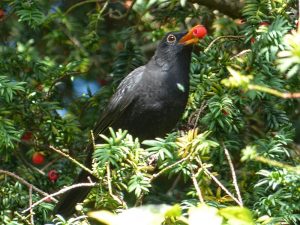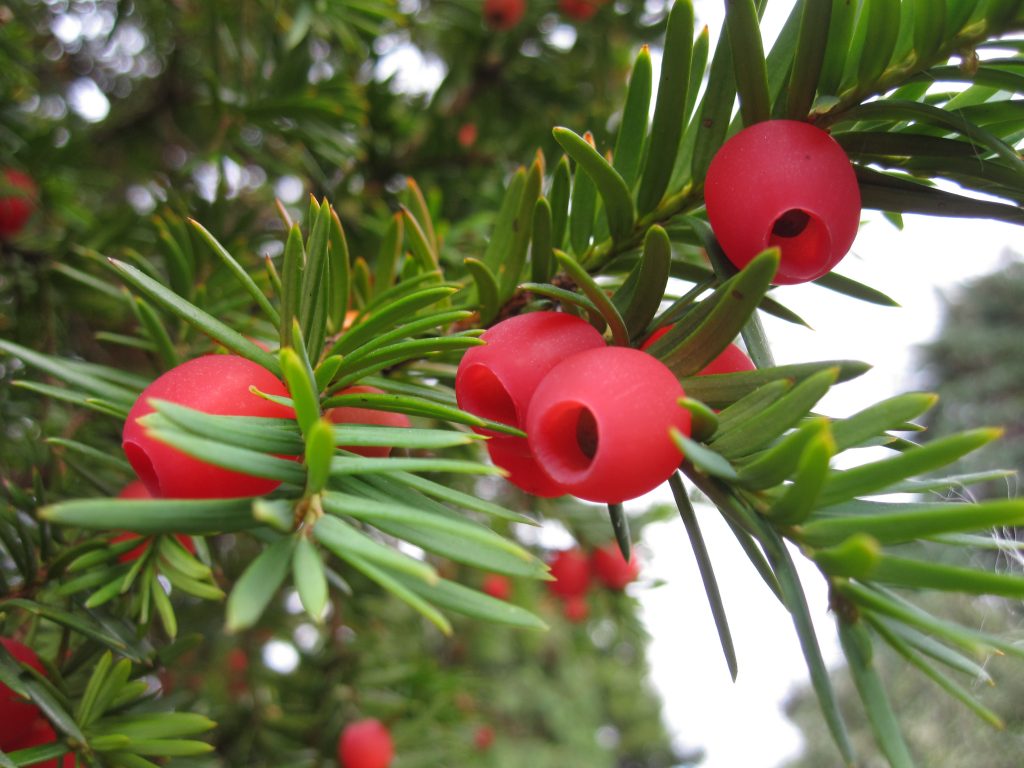The idea that a story about a male yew tree producing a female branch would go viral and attract massive media attention would have seemed highly unlikely a month ago. Nevertheless, this is exactly what happened with the Fortingall Yew when it was noticed that a group of three yew berries (technically called arils) were present on a branch within this otherwise male tree. The first coverage was in the Scottish Mail on Sunday on the 1st November and then most of the major newspapers picked up the story during the following week. To date the story has featured around the world and has made the pages of such unlikely publications as The Spectator and The Economist. There was even an appearance on the satirical BBC programme Have I Got News for You.
One result of all this media coverage has been the many comments from people. Among these there have been some intersting observations of the poorly understood phenomenon of partial sex change in yew trees. At least one person pointed out that this is not a new observation, although that was never claimed. A Polish study published in Dendrobiology in 2004 that looked at nearly 3,000 yew trees found that less than 1% had both sexes on one tree. Yews with both sexes have been reported from time to time for over 100 years, but they certainly seem to be pretty rare.
Perhaps the most exciting comment was from Janis Fry who got in touch to say she had seen a female branch on the Fortingall Yew back in 1996. From comparing notes it seems likely we have both observed the same branch, so this raises the possibility that the branch has been female since at least 1996. Janis said that she has been studying yew trees for over 40 years and in all that time she has only seen 12-15 trees that display both sexes on one tree.
Although the mechanism of sex determination in yew trees is unknown, scientists have noticed a correlation between conifers that have the sexes on separate trees and the production of fleshy fruits. Yew is a nice example of this. The fleshy aril is evolved to attract birds with its bright red colour. The theory is that the reproductive benefits of having animal dispersed seeds outweighs the cost to the female tree of investing so much energy in producing large edible fruits. It seems that the yew ‘berry’ is a key product of evolution that enables yew trees to have separate sexes. There are other examples of this strategy in the collections at the Botanics. The Chilean Plum Yew (not a yew, but a distantly related conifer in the genus Prumnopitys) normally has the sexes on separate trees and has edible green ‘plums’ on female trees. Curiously, a male tree here at the Garden was observed to produce a few fruit in recent years, mirroring the situation with the Fortingall Yew.
All this interest in yew trees and their curious sexual habits has been a golden opportunity to promote the ongoing project to establish a yew conservation hedge around the Garden. This work involves the phased replacement of the existing hedge with a new yew hedge composed of around 2,000 plants raised from wild collected seed and cuttings that will encircle the Garden and provide a resource for research into yew genetic diversity across its wide native range. Ultimately, trees could even be returned to areas where yew is under threat of extinction.



1 Comment
1 Pingback